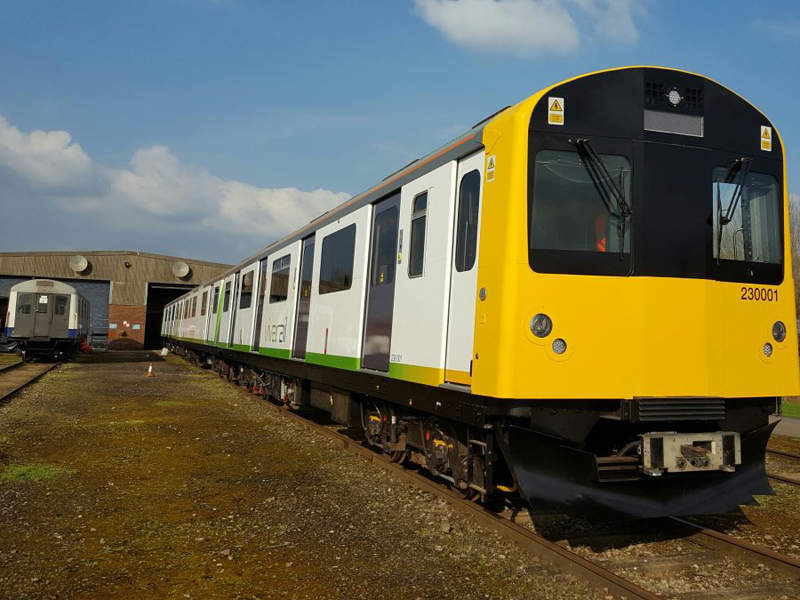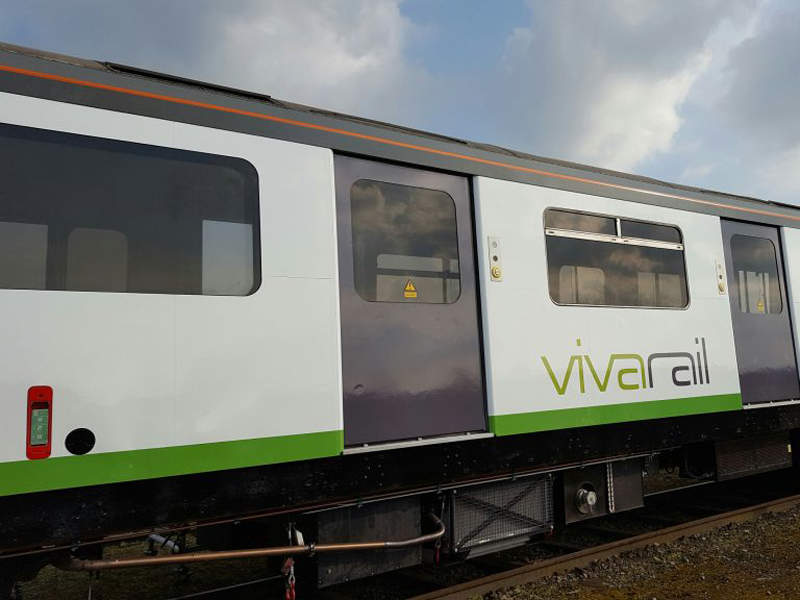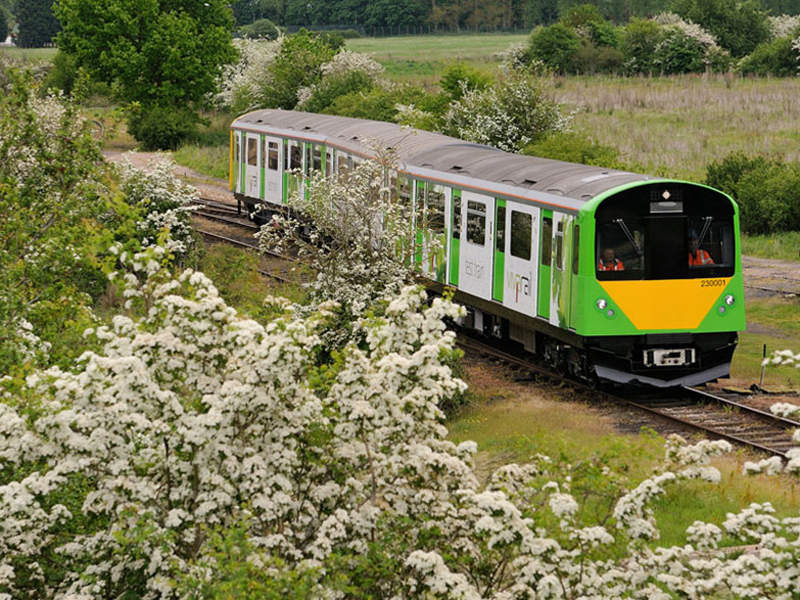Class 230 D-Train is being developed by Vivarail through the conversion of retired London Underground D78 Stock. The new trains will be offered in three configurations named City, Commuter and Country.
First test run of the D-Train unit was conducted in April 2016. A prototype D-Train (230001) carried passengers from Honeybourne to the Rail Live exhibition at the Quinton Rail Technology Centre in June 2017.
In July 2017, Vivarail secured a grant from Innovate UK, which promotes science and business innovations in the UK, for the integration of battery technology into the vehicle.
The Class 230 D-Trains are scheduled to begin commercial operations on the Marston Vale Line by the end of 2018.
Class 230 design, configuration and facilities
The Class 230 D-Train will be available in different layouts with various amenities to satisfy specific needs of passengers. The vehicles will be fitted with universal access toilets, refreshment trolleys, tables, smart storage solutions and iPad holders.
The City configuration will have two and three cars per unit. The two-car vehicle will house 86 seats per unit and will offer a total passenger carrying capacity of 188. The three-car vehicle with 140 longitudinal seats will have a total capacity of 294, including standing passengers.
The Commuter variant will feature two and three cars per unit. The two-car vehicle will have 114 mixed-type seats and will accommodate 188 passengers in total. The three-car vehicle with 172 longitudinal seats will accommodate 297 passengers, while the three-car vehicle with 154 transverse seats will carry 147 standing passengers additionally.
Each train set of the Country layout will include three cars. The layout will accommodate 163 seats and offer a total capacity of 291.
Variants of Class 230 D-Train
The Class 230 D-Train is currently being developed in two different prototypes, 230001 and 230002. The diesel-electric multiple unit (DEMU) 230001 variant has three cars. Each car features seats, tables, Wi-Fi, charging points, and a toilet.
The vehicle is equipped with DC traction motors, which are reliable, easy to maintain and provide better performance.
The 230002 variant, which is currently under development, will feature four battery rafts. The 106kWh batteries will offer a range of 64km and will require an eight-minute charge after each journey. The battery-powered train can be charged through an automatic charging point.
The two-car vehicle can also be charged through a static battery bank with an electric supply of 11kV or 33kV. The train will require a minimum power of 750V to operate.
Sustainable features of Class 230 D-Train
Aluminium body-shell scrap of D-stock trains and bogies designed by Bombardier were reused for manufacturing the Class 230. They are expected to offer a service lifespan of more than 25 years.
The carbon-neutral construction of trains saves waste, energy, money and time by reusing the quality parts of the old vehicles. The environment-friendly vehicle is also more economical to purchase, operate and maintain, and can be easily serviced in a short duration.
Emissions released will be minimised by the stop-start engine fitted to the train and the empty mileage saving on fuel costs will also be reduced through trackside maintenance, resulting in less of an impact on the environment.
The train is also compliant with the current rail industry emission standards with its automotive technology.
Suppliers involved with the D-Train
The traction batteries for the trains used in the IPEMU trial were supplied by Valence. Strukton Rail was contracted to supply electronic power control systems for the Class 230 D-Train.
Traktionssysteme Austria (TSA) is responsible to supply AC traction motors for the trains.






